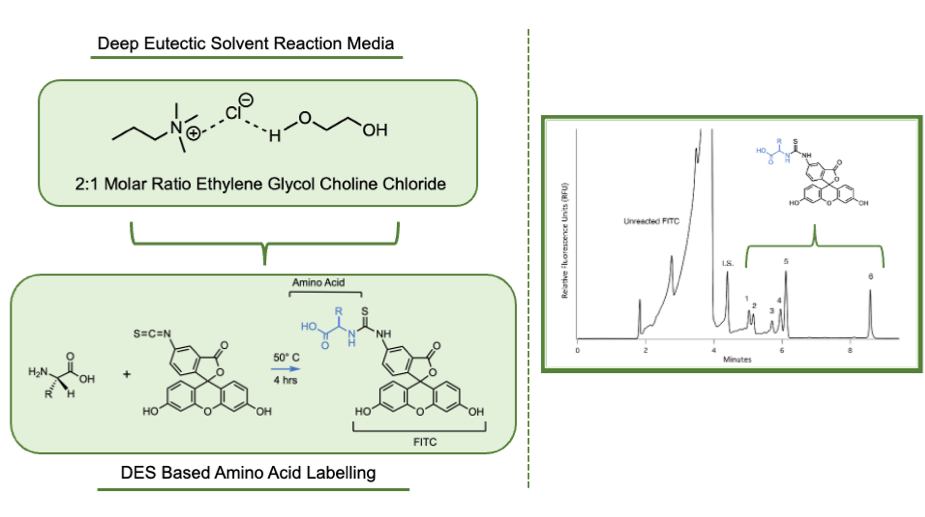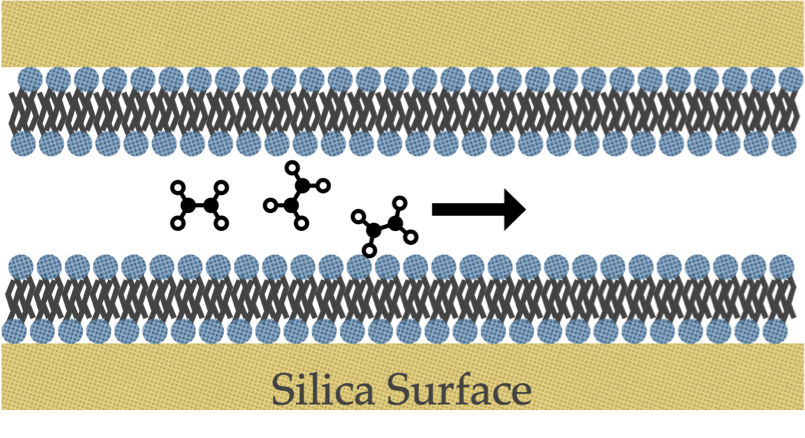Research

The Harrison Lab is involved in a broad range of research activities all centered around chemical analysis and measurements. This ranges from looking to detect past life on other planets to observing chemicals the microbes in our guts produce – and many other topics in between. We try to keep this page up to date, but sometimes that’s easier said than done. So don’t hesitate to contact Dr. Harrison to see if any new exciting projects have gotten started since the page was last updated.
Deep Eutectic Solvents
Our lab has begun to explore how novel solvents (termed deep eutectic solvents – DES) can be employed to improve chemical analyses. These DES are typically binary combinations of chemicals (e.g. ethylene glycol and choline chloride) that when mixed in the appropriate molar ratio will dissolve one-another and give rise to a solvent with unique solvation characteristics.
We started by exploring how a simple DES could be used to solubilize and carry out the fluorescent labelling of amino acids for CE analyses. Now we are expanding our exploration of these solvents and how they can be employed in CE separations.

Capillary Coatings
A consistent focus in our work to perform the separation of biomolecules via CE has been the desire to explore new and better ways to modify and protect the capillary surface. By altering the surface charge and chemical character we can modify the magnitude and direction of the electroosmotic flow and prevent the adsorption of analytes to the surface.
We are continuing to explore how the structures that we adsorb and adhere to the capillary surface can be modified and stabilized. Though this work is not directed to a specific target separation we know that this work will expand the toolkit of other separation scientists, and will help to improve all CE separations.

Thirdhand Smoke Detection
The Harrison lab has been working in partnership with the Thirdhand Smoke research consortium to help develop and improve upon ways of detecting thirdhand smoke (THS) residue in living spaces. We want to make it easier and more accessible for individuals to be able to test their environments to see what level of contamination they might be exposed to.
To do this we are developing new approaches to detecting one of the key THS compounds – nicotine. Students are working on colorimetric tests, wherein a DES will change color when nicotine is present. Others are developing new variations of the PDMS polymer to make it more capable of capturing nicotine from the environment, and even using the PDMS as a sensing platform for the total analysis.

Biosampling
Our research group is interested in learning what goes on chemically within the body and how that can be quantified. To that end we work with a number of different biological samples.
For monitoring the changes that occur in the metabolism of an individual when diets change we are analyzing fecal samples. This is part of a USDA study being lead by Prof. Shirin Hooshmand from SDSU’s department of Exercise and Nutritional Sciences.
Other projects are looking at the biomarkers that we can detect from other sources such as capillary blood and even tear fluids. The goal being to find better sampling methods, and sample matrices that can simplify and improve the analytical process.

